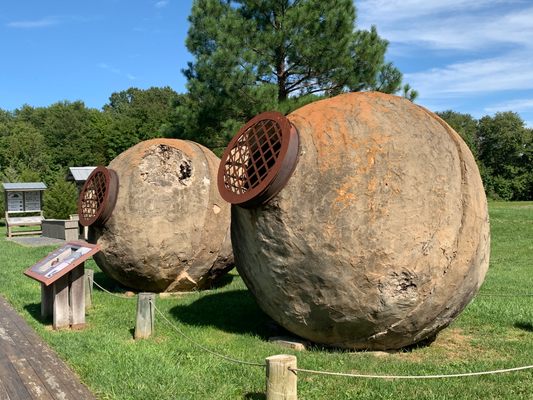About
At the Gold Mining Camp Museum in Goldvein are two enormous relics from Virginia’s gold mining past. Few realize that Virginia was one of the first states in which gold was discovered. In 1782, Thomas Jefferson discovered a four-pound rock containing gold ore along the Rappahannock riverbank.
His find caught the attention of local farmers and landowners, and by 1804, gold prospectors and small-scale mining operations were at work in the state. Most Virginia gold mining enterprises were concentrated in the “Gold-Pyrite Belt,” a 15- to 25-mile-wide strip of land that runs for almost 200 miles along the Blue Ridge Mountains’ eastern side.
After reaching its zenith in the 1840s, Virginia gold mining practically ground to a halt in 1849. That was the year most miners moved west, following the lure of greater riches during the California Gold Rush. Interest in Virginia gold peaked again in 1934 when a Troy ounce’s value rose to $35.00. However, that renaissance was short-lived. Virginia gold production petered out in the late 1930s and gold was last produced in the state in 1947.
In October 1998, Monroe Park and the Gold Mining Camp Museum opened in Goldvein to showcase the state’s gold mining history. Although the park is not an actual mine site, at least 18 abandoned mines are located nearby in Fauquier County. The museum replicates a mining camp from the 1930s and its interactive displays include a bunkhouse, mess hall, and assay office, such as those that would have been used by Depression-era Virginia miners.
Two of the museum’s most unusual mining artifacts are the huge Hornet Balls salvaged from the Liberty Mine ruins located about a mile from the park. Looking like gigantic medieval incendiary devices, these hollow spheres are constructed from reinforced concrete over an iron mesh frame. The Hornet Balls are seven-feet tall and over 20-feet in circumference. They each weigh over seven tons.
The balls are something of a mystery. Although recovered from a mining site, how they were actually used is uncertain. It's believed that they crushed ore into pebbles to separate gold from rock. They were thought to be mounted on an axle and rotated around a central point by horse or steam power.
Opinions differ as to whether the ore was pulverized inside the balls or crushed underneath them as they turned in a trough. The origin of their name is equally puzzling. Some think the name came from the buzzing sound made as the balls rolled. Others believe the name derives from its striking resemblance to hornet or wasp nests. But all experts seem to agree that the name is unique to Virginia.
Related Tags
Know Before You Go
Monroe Park hours are dawn to dusk, daily. There are no entrance fees for the Gold Mining Camp Museum or Monroe Park.
Community Contributors
Added By
Published
October 16, 2020































